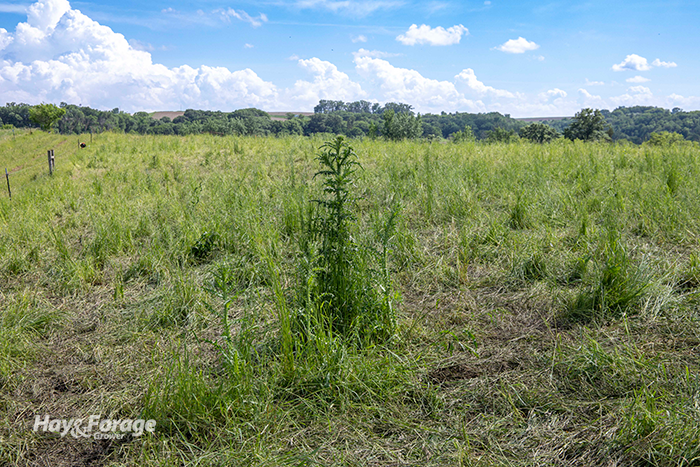Clipping pastures: an age-old debate |
| By Mike Rankin, Senior Editor |
|
|
 Farmers are known to have strong opinions and often readily express them. From a pasture management perspective, few topics illicit stronger feelings than when the clipping topic is put on the table. I recently returned from a grazing dairy where I didn’t even have to broach the subject. As we walked down the lane to a far-off paddock, the farmer passionately went into a dissertation of why he routinely clips pastures after the first or second rotation. I’ve also been on farms where a strong stance was taken for not clipping. The primary reason for clipping is to improve the forage quality of the pasture by eliminating the taller mature stems and seedheads. This sets pasture plants back to a vegetative state and creates a uniform stubble height. In doing so, the mature stems don’t restrict animals from accessing the vegetative growth in the lower canopy during the next rotation. A secondary reason to clip pastures — but with little economic significance — is simply that of visual appeal. Clipping pastures doesn’t occur without some expense. There are labor and machinery costs involved, which are going to total $15 to $20 per acre on most farms. Assuming pastures are not cut too short and the clippings are evenly spread so as not to smother existing plants, the improvement in forage quality can more than pay for the cost of clipping. As a general observation, dairy farmers are more apt to clip pastures than beef or sheep farmers. This is simply because a lactating dairy cow requires a higher plane of nutrition than her meat animal counterparts. How a pasture is clipped is just as important as if it is clipped. Clipping can set a pasture back if the cutting height is too low. Four inches is considered a minimum height, but 6 to 8 inches is more desirable. The idea is to leave as much green vegetative plant tissue as possible to enhance regrowth. Keep in mind that animals may initially not graze below the clipping height because of the rigid stem stubble. Clipping can be done using a rotary, disc, or sickle mower. Cutting height is more important than the chosen tool. Another possible economic advantage for clipping is to eliminate weed seedheads before the seeds become viable. This will work for annual and winter annual weeds, but clipping some perennial weeds such as Canada thistle may actually exacerbate the problem. Although it’s true that repeated clippings can weaken the root systems of perennials, most pastures only are being clipped once per year, and clipping just makes them more resilient. If annual weeds are clipped too late, this might result in the spread of viable weed seed to other pastures. Soil moisture needs to be considered before making the decision to clip pastures. If moisture is limiting, and there is no reason to believe that the situation will improve, refrain or delay clipping. Even though the taller forage may be lower quality, it will help shade the soil surface and save moisture; it will also preserve root mass. Under dry conditions, clipping can inhibit regrowth, especially if the cutting height is too low. If clipping is done with marginal soil moisture available, ensure that no green plant tissue is removed. Grass species may also come into play when making a clipping decision. Some species lodge or get trampled easier than others. For example, orchardgrass stems seem to stand up through thick and thin. If Kentucky 31 fescue dominates your pastures, there may good reason to clip off the highly toxic seedheads. Some farms are able to successfully avoid clipping by running high stock densities in small paddocks while moving animals frequently. This results in sufficient trampling and allows the height of new growth to exceed that of the trampled plants. A relatively high level of management is needed for this type of system. As with the numerous articles written about the virtues and evils of pasture clipping, perhaps no minds have been changed with this one. If you can manage your pastures in such a way that no clipping is needed, good for you. On the flip side, there are some good reasons to clip once or possibly twice a year if conditions are right and higher quality forage is desired. The clipping decision, in most cases, won’t make or break the farm. |
